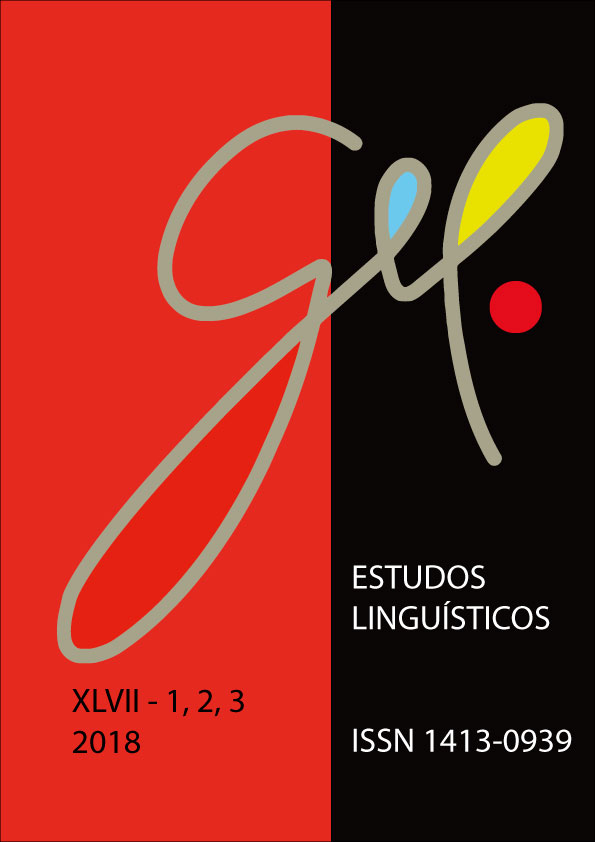Jakobson's intersemiotic translation revisited and a small analysis of Asterix comics
DOI:
https://doi.org/10.21165/el.v47i2.1953Keywords:
Roman Jakobson, intersemiotic translation, comic book, AsterixAbstract
This paper seeks to rethink the intersemiotic translation (IT) concept, created by Roman Jakobson, since the Russian author himself wouldn’t have developed it. Firstly, the IT is linked to two crucial ideas of the linguist: the communicative scheme and the language processing via metonymies and metaphors. Secondly, sign and text ideas in Jakobson’s IT are reviewed via Peircean thought and Multimodality. Then the developed ideas are used in the analysis of two pairs of frames (source and target) from comic books of the French character Asterix. As result, it is demonstrated that Jakobson’s IT can be applied both in the translation of a complete work into other (a book into a film) and in the translation of unities inside the comics (images into words). Also, it is showed that IT can occur simultaneously with intra and interlingual translations, concepts also created by Jakobson.Downloads
References
AGUIAR, D.; QUEIROZ, J. Towards a Model of Intersemiotic Translation. The International Journal of the Arts in Society. v. 4, n. 4, p. 203-210, 2009.
AMORIM, L. M. Tradução e Adaptação: Encruzilhadas da Textualidade em Alice no País das Maravilhas de Lewis Carrol, e Kim, de Rudyard Kipling. São Paulo: Editora UNESP, 2005.
BARBOSA, H. G. Procedimentos técnicos da tradução: uma nova proposta. 2. ed. Campinas: Pontes, 2004.
GOSCINNY, R.; UDERZO, A. Asterix entre os bretões. Tradução de Jorge Faure Pontual. Rio de Janeiro: Record. 1985.
GOSCINNY, R.; UDERZO, A. Asterix e o caldeirão. Tradução de Cláudio Varga. Rio de Janeiro: Record. 1986.
GOSCINNY, R.; UDERZO, A. Astérix chez les Bretons. Édition 07. Paris: Hachette. 2008 [1966].
GOSCINNY, R.; UDERZO, A. Astérix et le chaudron. Édition 07. Paris: Hachette. 2010 [1969].
HOLENSTEIN, E. Jakobson: o Estruturalismo Fenomenológico. Lisboa: Editorial Veja, 1975.
HUTCHEON, L. A theory of adaptation. New York: Routledge, 2006.
KRESS, G. What is mode? In: JEWET, C. (Ed.). The Routledge Handbook of Multimodal Analysis. London: Routledge. 2009. p. 54-66.
JAKOBSON, R. Linguistics and Poetics. In: SEBEOK, T. A. Style in Language. Cambridge: MIT Press, 1960.
JAKOBSON, R. Aspectos linguísticos da tradução. In: Linguística e Comunicação. Tradução de Izidoro Blikstein e José Paulo Paes. São Paulo: Cultrix, 2003
JAKOBSON, R.; HALLE, M. Two Aspects of Language and Two Types of Aphasic Disturbances. In: Fundamentals of Language. The Hague/Paris: Mouton, 1956.
JEHA, J. C. Intersemiotic translation: the Peircean basis. Anais da Semana de Estudos Germânicos, 11. Belo Horizonte: UFMG, 1996. p. 81-87.
KRISTEVA, J. Introdução à semanálise. Tradução de Lúcia H. F. Ferraz. São Paulo: Perspectiva, 1974
PEIRCE, C. S. Collected Papers of Charles Sanders Peirce, ed. by Charles Hartshorne, Paul Weiss & Arthur W. Burks. Cambridge: Belknap Press, 1931-1966. 8 v.
PEIRCE, C. S. Semiótica. Tradução de José T. C. Neto. São Paulo: Perspectiva, 2005. Coleção Estudos.
PLAZA, J. Tradução Intersemiótica. São Paulo: Perspectiva. 2003.
SILVA, A. C. Metodologia de análise em traduções de histórias em quadrinhos: uma possibilidade para geração de dados. In-Traduções, Florianópolis: UFSC, v. 6, n. 10, p. 124-141, 2014.
VILA BARBOSA, M. M. Delirant isti translators! Análise dalgúns elementos de difícil traduzadaptación en Astérix. Herméneus. n. 16. Soria: Universidad de Valladolid, 2014. p. 291-327. Disponível em: <http://uvadoc.uva.es/handle/10324/8632>. Acesso em: 09 jul. 2017.



